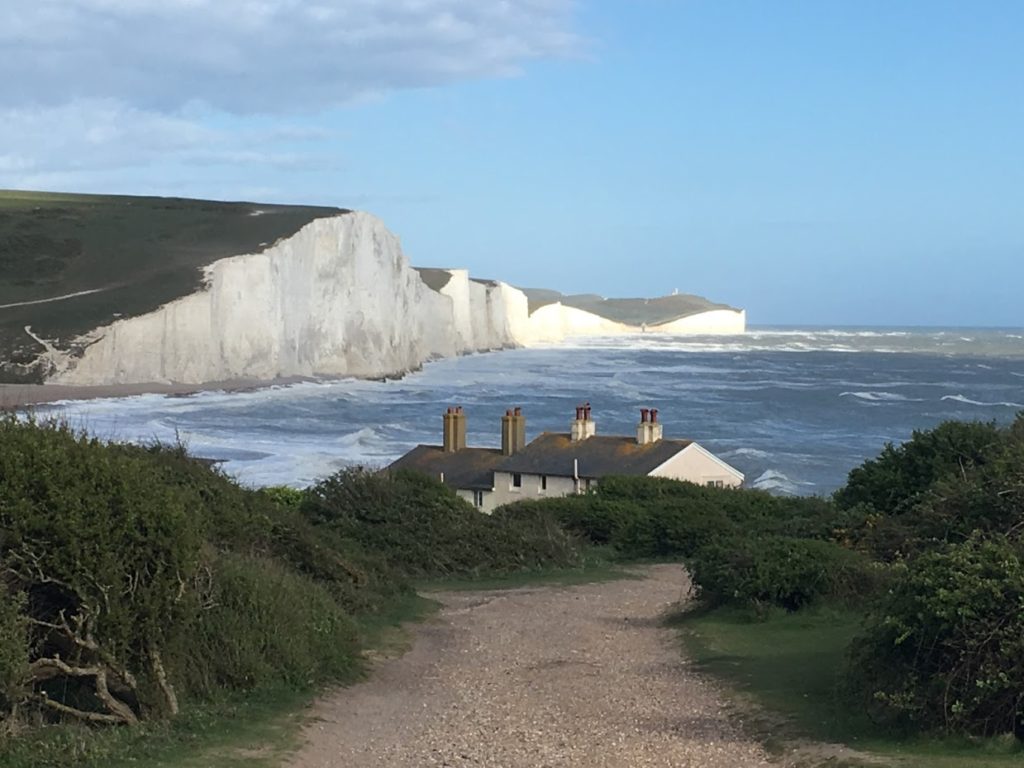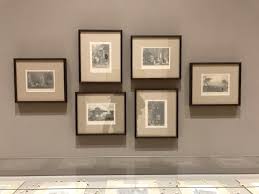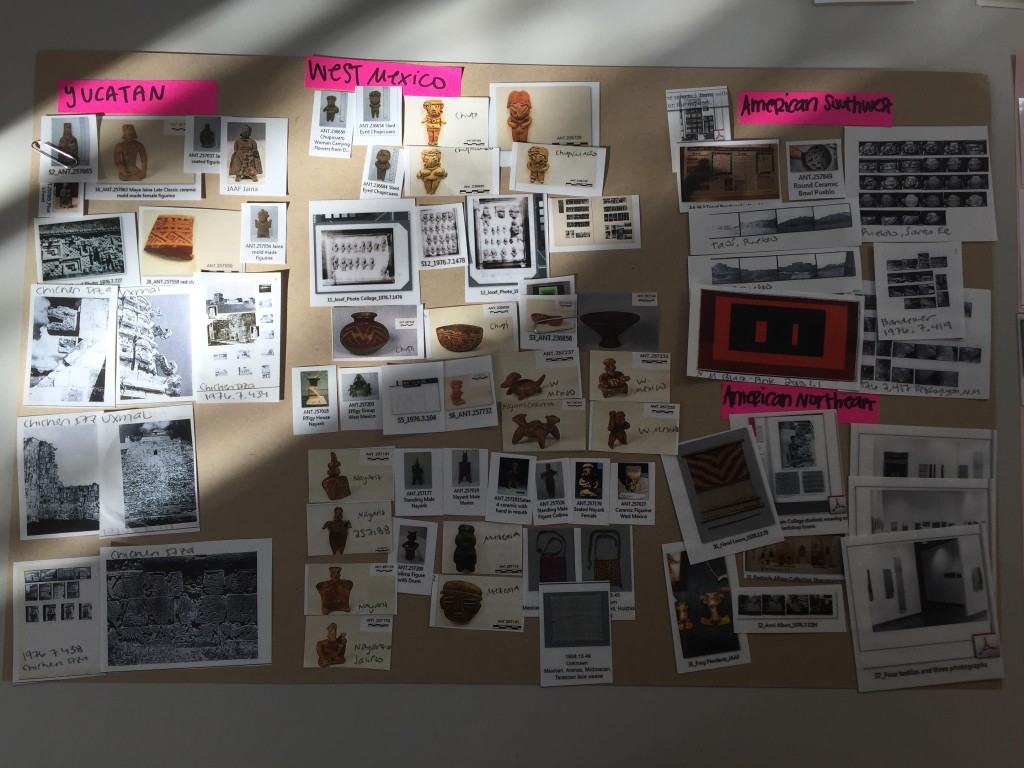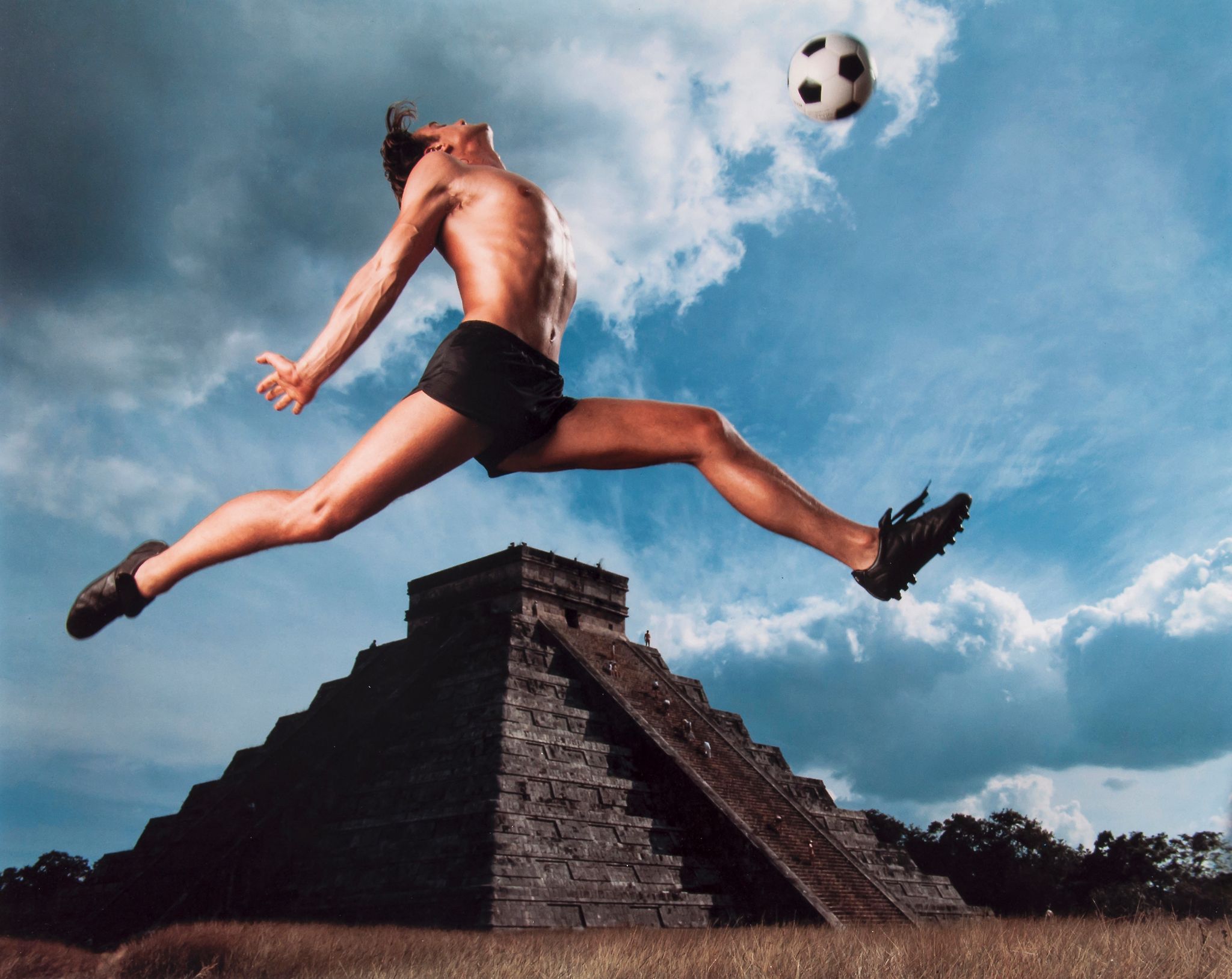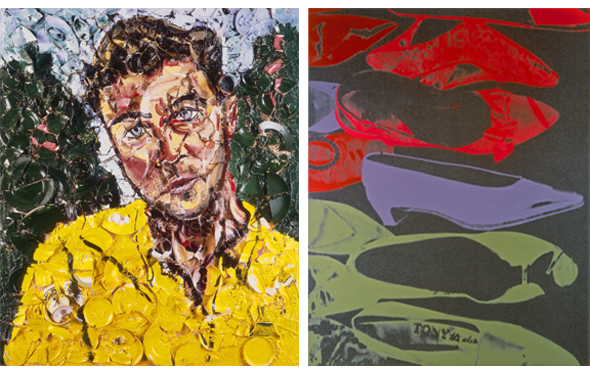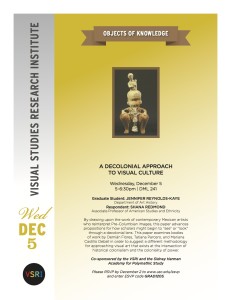This semester I worked with a Yale School of Art MFA student, Victoria Martinez, and the Wilson Branch Manager Luis Chavez-Brumell, to create a community art project. Learn more about it 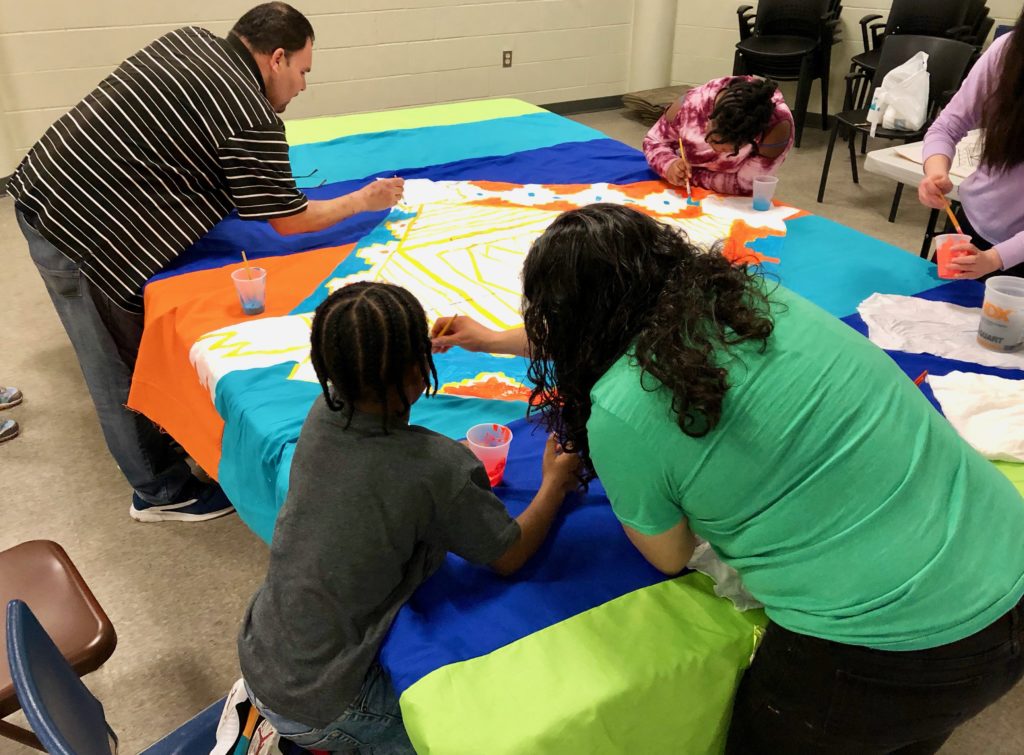
Category Archives: Art History
Towner Art Gallery and Seven Sisters
I arrived yesterday into Heathrow and after a fairly speedy experience through passport control, hopped into a car and headed for the two-hour excursion to Eastbourne. I’m here again in England (after two weeks at home) for a fabulous docent trip through Sussex. We’re staying at the amazing Grand Hotel Eastbourne, and after just one night, it’s hard to imagine staying at any hotel with less than five stars (at least, when traveling for business!)
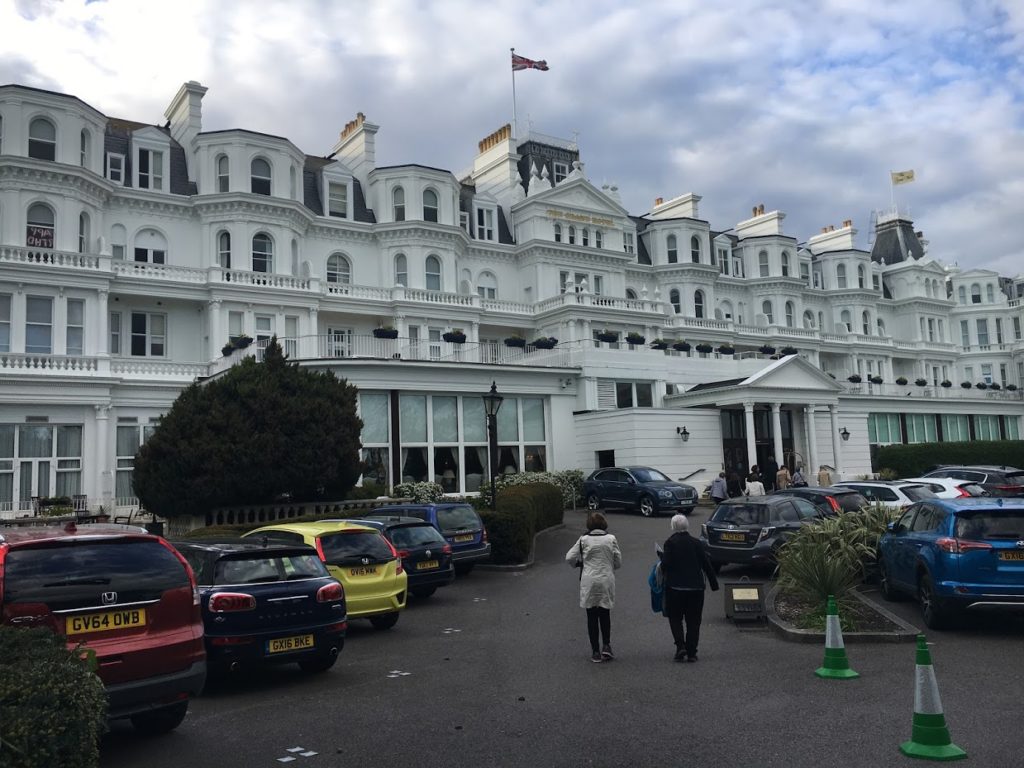
The Towner Art Gallery was a great way to start this week-long trip with our YCBA docents. They have a very robust educational program that is fully integrated into the museum — from the display of local K-12 student art in their Draw Me In exhibition to tours of storage for students, it’s all there. They have a rotating gallery space that the director, Joe Hill, told us he wants to be curated by artists, taxi drivers, and environmental activists from nearby Brighton. What a breath of fresh air!
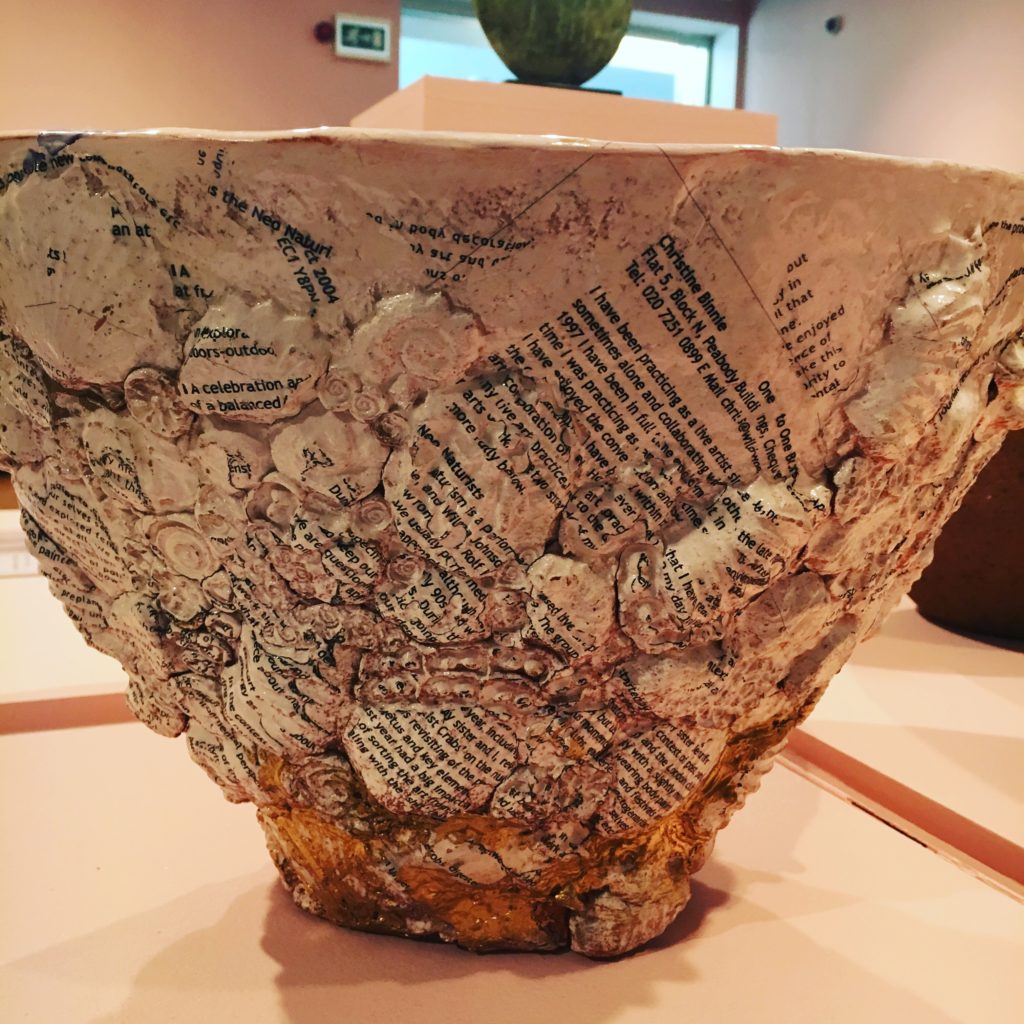
Christine Binnie 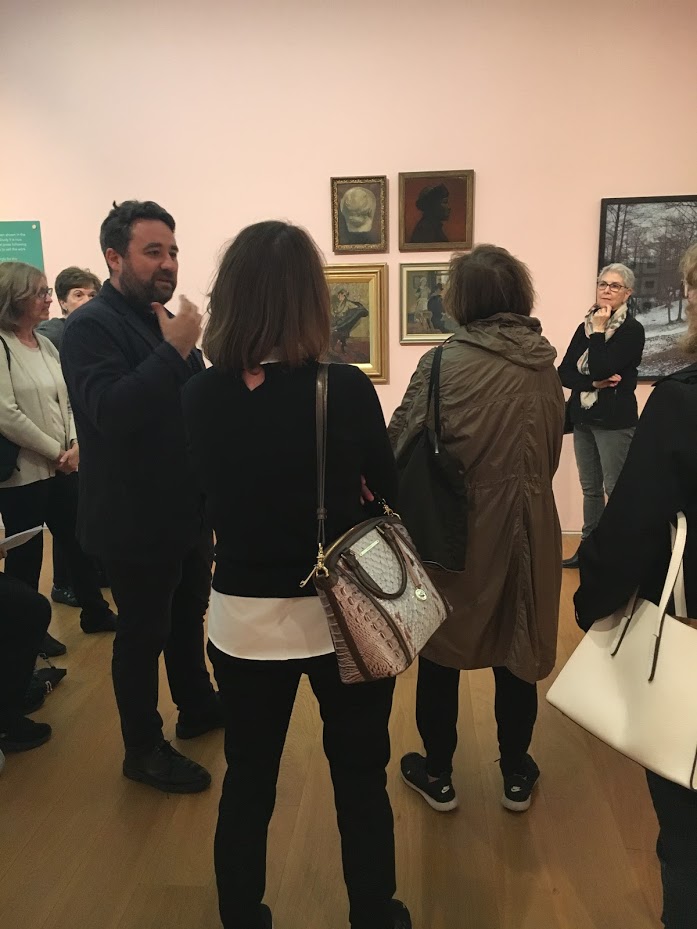
Joe Hill (left) 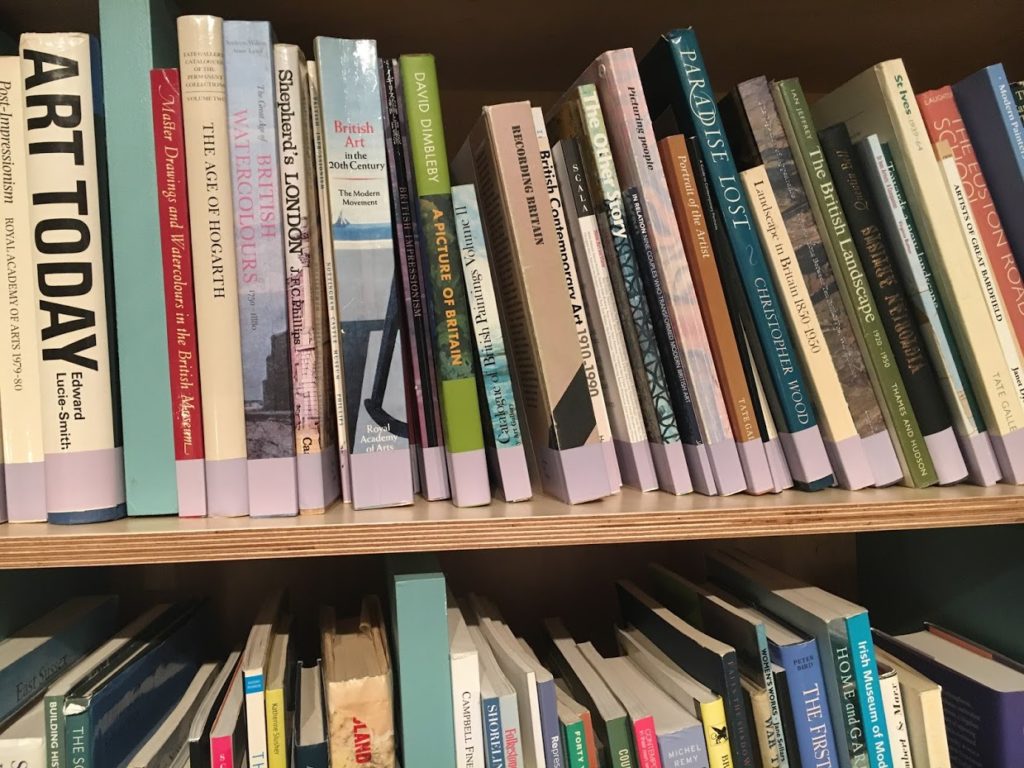
Publicly accessible curatorial library 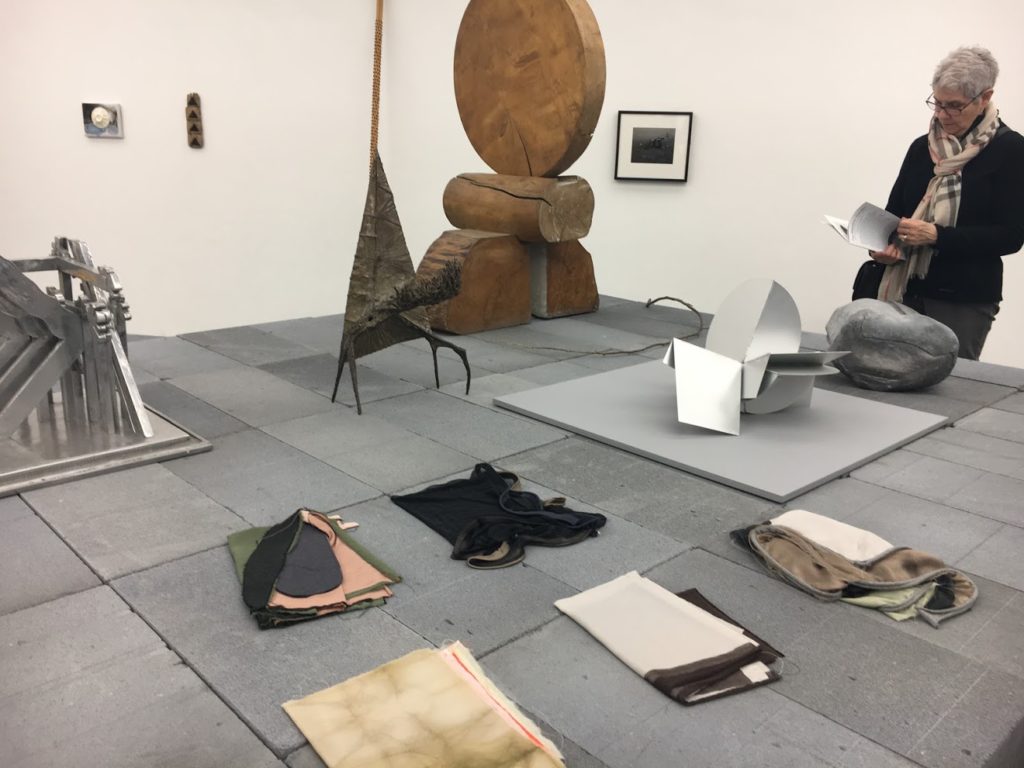
The Weather Garden exhibition 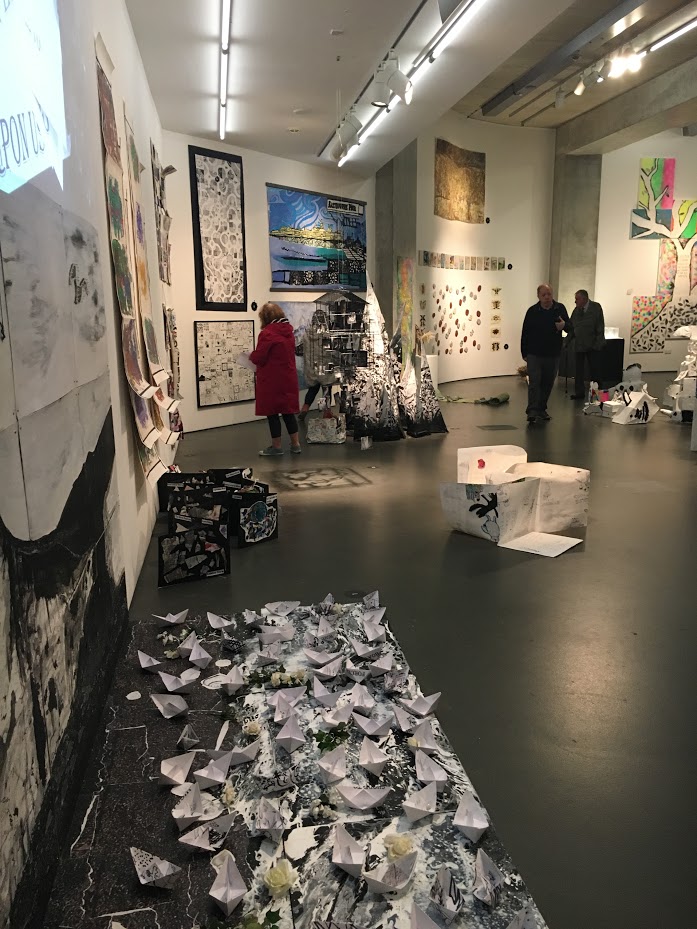
Draw Me In exhibition 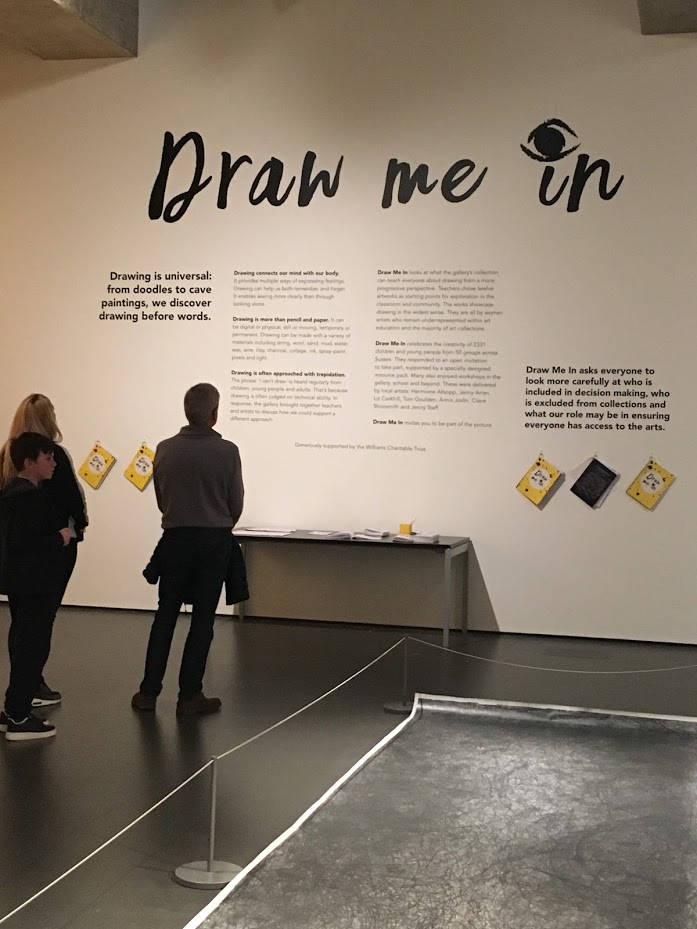
Fantastic 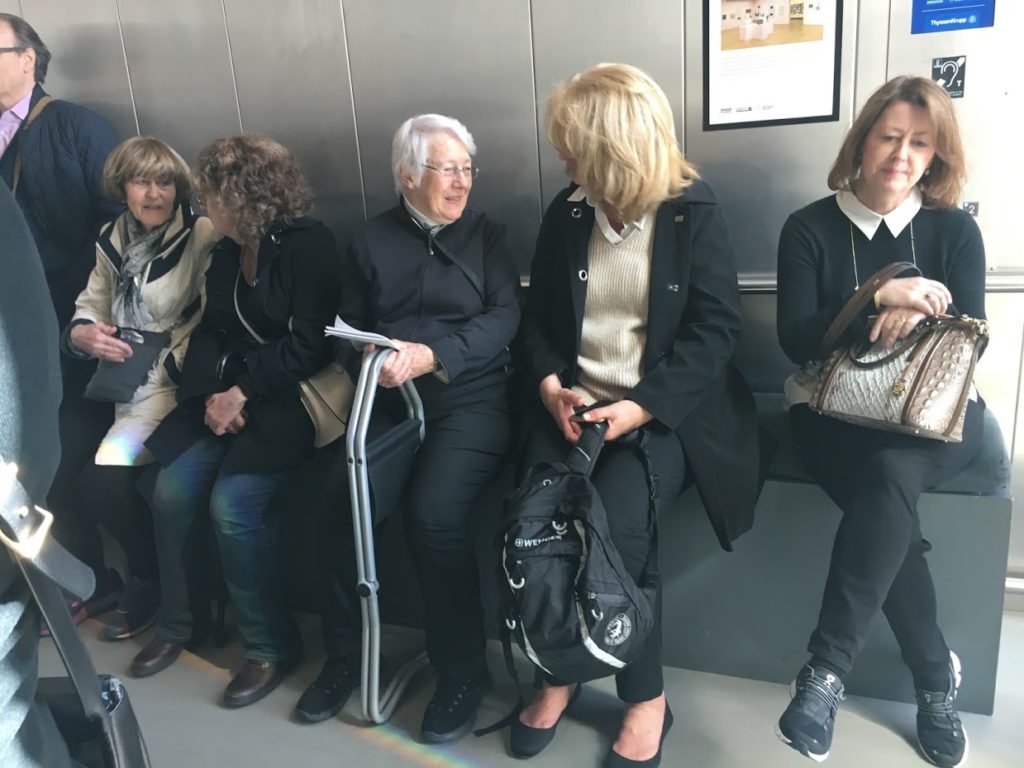
Seats in an elevator!
The entire bespoke building exudes creativity and accessibility, from the sensory room to the comfy benches in the elevators. Sure, we have a library. But they have a study space with books from curators’ individual libraries. Imagine both the general public and specialized curators reading the same books! There’s so much to appreciate and admire at the Towner Art Gallery, and I left feeling inspired and ready to take some of these ideas back to the YCBA.
After the Towner Art Gallery, we hopped in the bus for the trek to the Seven Sisters. There were sheep. There was wind. There were incredible vistas and pieces of wool flying around. Overall, a breathtaking (literally) experience.
Reluctant anglophile
Never in my wildest dreams (which must be pretty tame), did I ever think I would become a budding anglophile. For pretty much my whole life, I was told that England was “boring” by my father — the “Reynolds” of “Reynolds-Kaye” comes from him. Am not sure if this was some sort of rejection of his grandfather’s homeland or just a predilection for the warmer and more “exotic” climates of Southeast Asia and the Pacific Islands, but in the end, it meant that I really had very little interest in anything British.
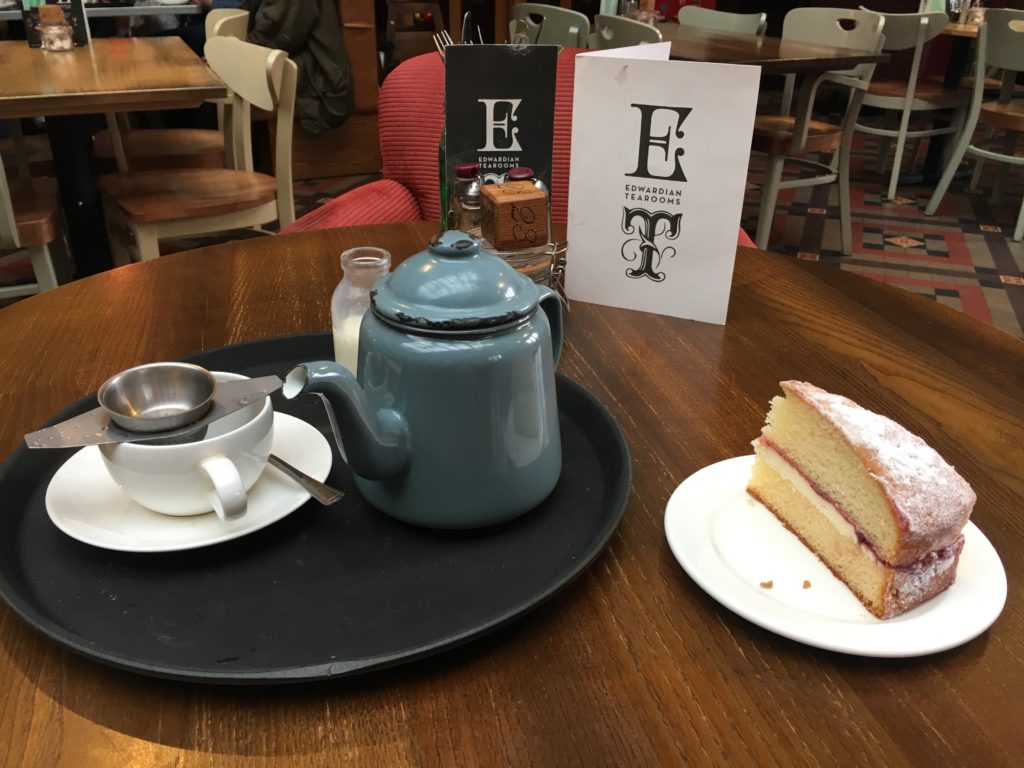
I was never one of those girls who read Jane Austen books and had the mildest infatuation with Prince William as a pre-teen. Shakespeare to me meant Leonardo DiCaprio as Romeo and even in college and graduate school, you never saw me in a British art history class — or, actually, they never offered that on the West Coast. As an adult, I did my best to become respectable and tried to get into Downton Abbey and the Great British Bake Off. I still associate fancy china, actual silverware, and brass knobbed wooden desks (like the one I’m writing on) as simply not for me.
Yet yesterday, I was seated at an extremely long table with white linen and silver candelabra with actual flames flickering off the tapered white ends of hand-poured candles. Eating off actual china with eight piece of differently sized forks, spoons, and knives in front of me. Along with our YCBA docents, I tucked into a two-hour three-course meal with decaf English Breakfast to top off a delicious meal.
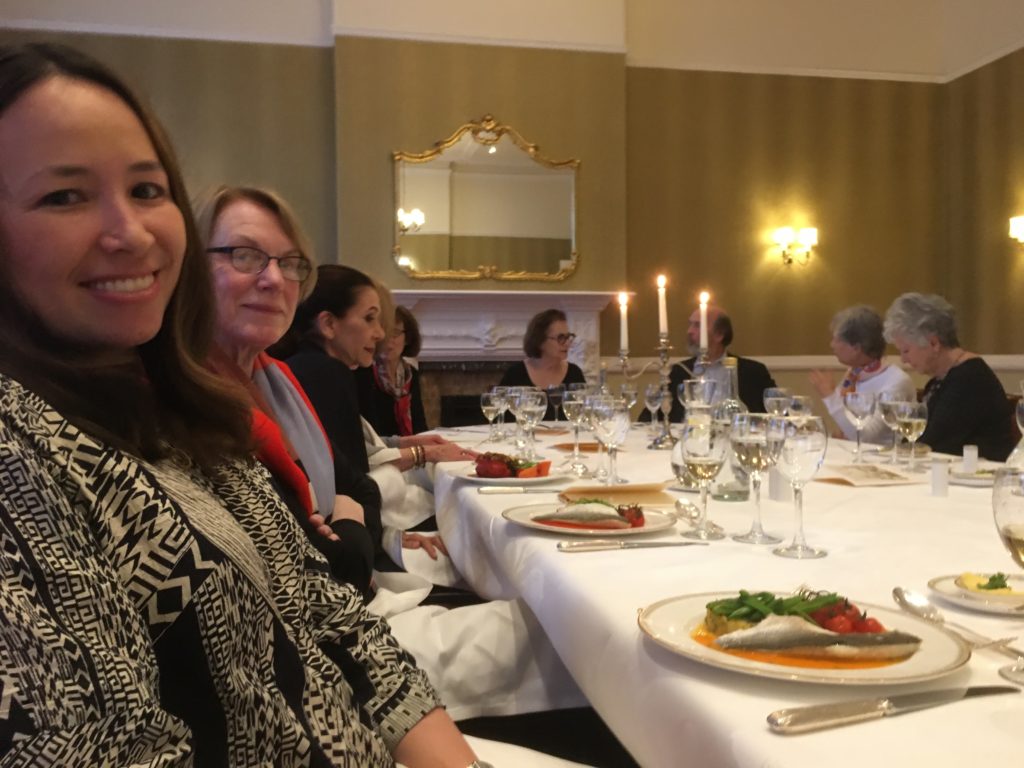
And the most shocking part of it all? I felt totally at home. If there’s one thing that working at the YCBA will do, it will be to turn you into a reluctant anglophile. Yes, I admit it. This California girl is embracing her British blood alongside the Japanese and French sides. Sure, “British” still doesn’t seem “exotic” to me, but at least it’s more comfortable than it was before. I’m learning to take joy in a good strong cuppa, embrace manage the awkward and overstated politeness, and appreciate British art — which, after all, was Paul Mellon’s goal to begin with.
Congratulations, Papa Mellon. You’ve done it. With me, at least.
Saturday morning routine
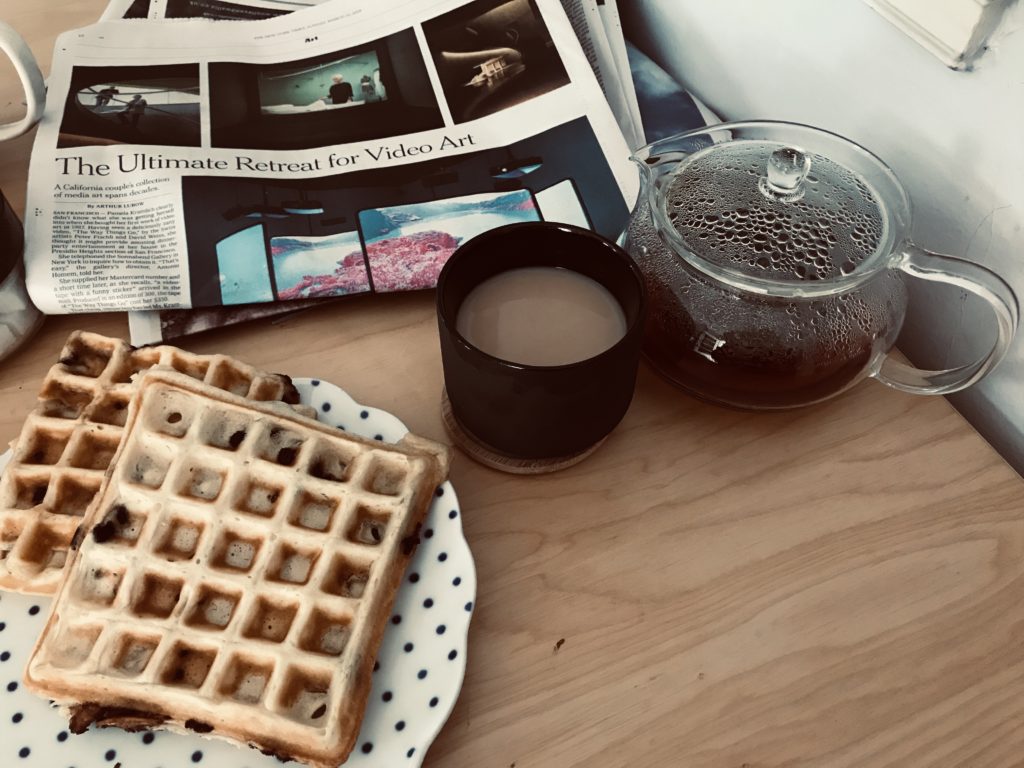
The work week is so scheduled — drop-offs, pick-ups,7 meetings a day – that on the weekends, it’s all about taking the time to loosen up, take it slow, and lose track of time. It means taking the time to make a pot of organic lavender earl grey, cook up some waffles with T, and actual read the paper. During the academic year, when every hour is accounted for, each email needs a response, it makes it even more critical to take time to unplug from Outlook and make time for myself and the family.
This was a tough week that required a lot of emotional connecting, empathy, perspective taking, and breathing. Where you spend most of your time, who you spend your time with, and what you spend time doing — these all weave into the daily fabric of a life. When people are struggling, when the mission goes awry, what is the most human way to respond? How do you align your moral and ethical beliefs with your work 100% of the time? Is it OK if it only aligns 80% of the time?
The saving grace of the week is an amazing class I’m auditing on Native North American Art. It’s a fantastic seminar with great reading assignments, fantastic guest speakers, and thought-provoking material. Most importantly, it’s a moment to heal and connect with and through indigenous art. It’s an anti-colonial space that reminds me of the other anti-colonial spaces that I sought out in graduate school. Demian Flores’s community art space in Oaxaca, La Curtiduria. The offices of Kaya Press and the people who publish cutting-edge literature from the Asian diaspora. Classes in American Studies and Ethnicity. The amazing female interlocutors I met at UCSD.
I’m longing for that type of unapologetic, brave, intersectional, soulful, healing, dynamic, un-self-conscious partnerships. Was inspired yesterday by the incredible work of Jami Powell, who I had the privilege of hearing in the seminar. Felt moved by the incredible work of Luciana McClure and Nasty Women Connecticut, who opened the show Complicit: Erasure of the Body last night to a huge attendance. Am inspired by these women and doing what I can within my own museum to breathe this kind of liberatory spirit into the work.
Fred Wilson: Afro Kismet at Pace Gallery
When we first moved to New Haven over 4 years ago, one of the recurring selling points was that it was “only an hour and a half from New York.” At the time, I didn’t think that was a very compelling reason to uproot my then 8-month old twin boys and our lives in San Diego, but over time, I’ve definitely seen it as a crucial benefit. The proximity of New York – New Haven has definitely made it possible for me to see shows at galleries and museum that I otherwise would not have been able to see. Some of my favorite memories of working at the Yale Art Gallery and the Yale Center for British Art have been the days out of the office with colleagues on day-trips to the NYC. Whether to network with new colleagues, check out British artists, hangout with our Yale-Smithsonian Bartels Intern at the NMAI, or present at conferences, I have had a ton of reasons to come to New York and great memories that I carry back with me on the Metro-North.
The summer is a great – though hot – time to come to NYC, and while most of the major exhibitions seem to have closed and galleries are on hiatus, there were two good reason to make the trek: Fred Wilson’s Afro Kismet at the Pace Gallery and John Akomfrah’s Signs of Empire at the New Museum. Am in between the two shows enjoying an Earl Grey and chocolate chip cookie at the New Museum, and haven’t had a chance to see the Akomfrah. The Fred Wilson show, however, was really, really cool. Fred Wilson has been a touchstone for me since I first learned about “Mining the Museum,” and his work has been a consistent reference point the way I think about art, institutional critique, and museums. When my boss, Linda, encouraged me to see the show, I took her up on the offer.
For me, there were two highlights:
(1) his juxtaposition between African objects and European oil paintings.This totally reminded me of both Pedro Lasch’s Black Mirror / Espejo Negro and Demian Flores’ Deconstruction of a Nation / Deconstruccion de una nacion, both of which I wrote about in a short e-misferica article, in which I actually mention Wilson. So I’m coming full circle here, 4 years later, in New York. I kept wondering why he chose to bring these specific African sculptures together with these European paintings – were they made at the same time? Did they have a similar visual register? Was there a geographic specificity to them? The exhibition text was sparse and I’m hoping the catalog will help me answer some of these questions.
(2) his overlay of parchment or wax paper so that the majority of the image was obscured except for the little ovals that highlighted the black figures in the image. I really enjoyed this subtle way of emphasizing the figure of African descent, as it emphasized the global reach and specifically Turkish context in which many Africans were visually registered. That said, they sometimes seemed very shadowy figures, and by not clearly viewing the context, it made it difficult to understand what role that figure had in the image. Were they always in a negative, downgraded position in servitude or in the shadows, or is there any counter-reading available that could see their very presence a form of acknowledgment and assertion. This is visible proof of their existence, and the very visual material that makes Wilson’s project possible.
This refocusing reminded me of Titus Kaphar’s Crumpled and Wrapped series, where he’s literally re-framing the canvas, often to emphasize the figure of African descent. As a New Haven-based artist, I’ve had the pleasure of meeting him and teaching from his works of art at the Yale Art Gallery. His work is incredibly meaningful, and he couldn’t be a nicer person.
I’ve finished my tea and cookie, so I should sign-off and check out the Akomfrah show before I have to get back on the Metro-North. Trying to pace myself by only seeing a few shows during each trip to New York, and staying hydrated, caffeinated, and full has definitely become a priority. Have also learned the value of taking taxis instead of the subway and packing light. On to the next adventure!
P.S. If you’re ever in New York, come to New Haven! It’s only an hour and a half away!
A day in the life
During any given day, you will find me prepping to teach, cutting out thumbnails for an exhibition, speaking at a workshop on teaching at the Gallery, attending a History of Art Community meeting, editing my manuscript for the exhibition catalog, connecting to new colleagues on LinkedIn, or spinning at SHiFT cycling in New Haven. This week has been full of all sorts of challenges (intellectual, physical, logistical), and making it all work is a huge juggling act. Keeping all those balls in the air, thinking that they are each independent and autonomous of one another, while only I know that they are all interrelated. As one ball goes up, another goes down. The trick is keeping everything in motion, right? So just as my legs don’t stop spinning at my cycling class, I feel like my mind never stops moving (and that’s where yoga comes in).
The best thing is that I love every minute of it. I guess you could say I’m a born juggler. I thrive off the constant challenge and excitement of it all, and would be very poor at being bored or under-stimulated. I’m can definitely get overwhelmed by the work load and constantly switching gears, but I am not one to complain about it. I don’t think I could do it if I wasn’t genuinely passionate about academic affairs, teaching, curating, and the Gallery.
After all the craziness of the earlier part of the week, I have the next two days to slow down, return to editing my essay, and figuring out the objects for the show. I’m grateful for this next period of time to focus on keeping just a few balls in the air.
Annie Leibovitz’s Mexico86 Advertising Campaign
I’m reading Teresa Eckmann’s fabulous book Neo-Mexicanism: Mexican Figurative Painting and Patronage in the 1980s, where she introduced me to these amazing image from a state-sponsored Mexico86 World Cup advertising campaign that I’ve never seen before. Still working through an interpretation of these.
Mayan Pyramids in a Kia Car Commercial?
These are the types of use of the pre-Columbian past that I’m still trying to understand…
private collectors
I really need to get started writing this article, but I just came back from a field trip to the private collection of Matthew and Iris Strauss (see also here) and I feel the need to process. To back up a bit, I’m a visiting scholar at UCSD’s Center for US-Mexican Studies this year — a huge honor — and to try and take advantage of my affiliation here I am auditing a class on curatorial practice taught by MCASD director Hugh Davies. The class is phenomenal and the final project is to design an exhibition based on MCASD’s permanent collection that, if chosen, might be selected to be actually put on exhibit. Is that not the coolest thing ever?
Anyway, the class is awesome because we’re learning both theoretical and practical skills of curating — something that I’m eager to learn more about. Today’s class was a visit to the Strauss collection and it was really breathtaking. My favorite piece is definitely Fred Wilson’s Picasso/Whose Rules, though I was also impressed by the amazing array of contemporary art, much of it newer artists that I was less familiar with. One thing that my visit put into relief is that writing a dissertation will definitely give you a more narrow view (“specialized” is the polite term) of art because you’re really focusing on a few artists (and even then, a few works from their oeuvre). Plus, you tend to forget about the business side of things and the importance of private collectors. I’ll have to ruminate on this a bit more, but I am really impressed by the eye of the Strauss’s and their commitment to art and especially local audiences in San Diego. Wealthy individuals have the ability to spend their money on anything, so it is quite admirable when they spend it on art collecting with an eye toward benefiting the larger good.
a decolonial approach to visual culture talk
Last week, I gave a talk as part of the Visual Studies Research Initiative at USC. I was really nervous because I was sharing my ideas about decolonial approaches to visual culture with my colleagues and professors, and I had been preparing for months. I envisioned creating a different kind of space for knowledge exchange and production, so I came up with the idea of a dinner party — which was also timely considering it was the end of the year and a good moment for celebrating this year’s accomplishments. The talk turned out better than expected and people responded well to the Devil Wears Prada clip and the three artists who I presented on. I was worried that audience members might have negative reactions to decoloniality, but it was quite the opposite, as I found most of my colleagues genuinely wanted to learn more about the decolonial project. They offered some great comments and questions at the end and I received many congratulatory hugs. Now I just have to figure out how to spend the $250 gift certificate to the USC bookstore that I received as an honorarium!

